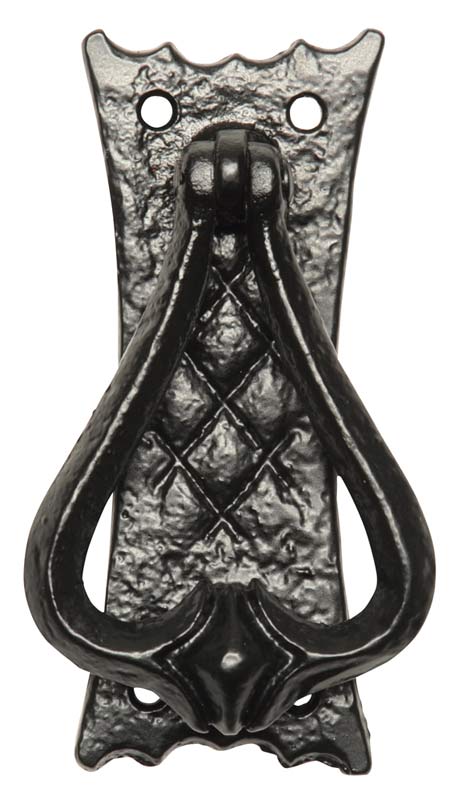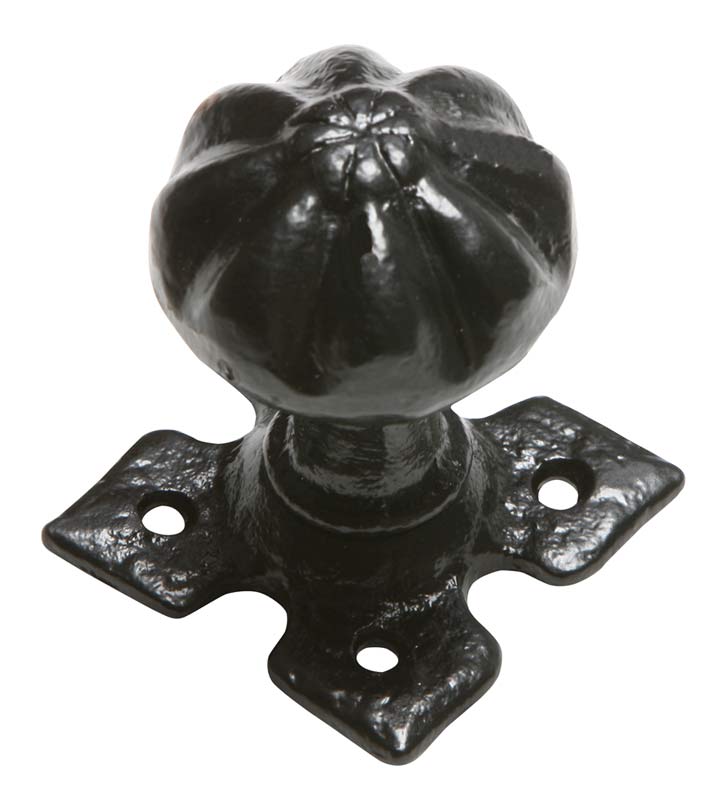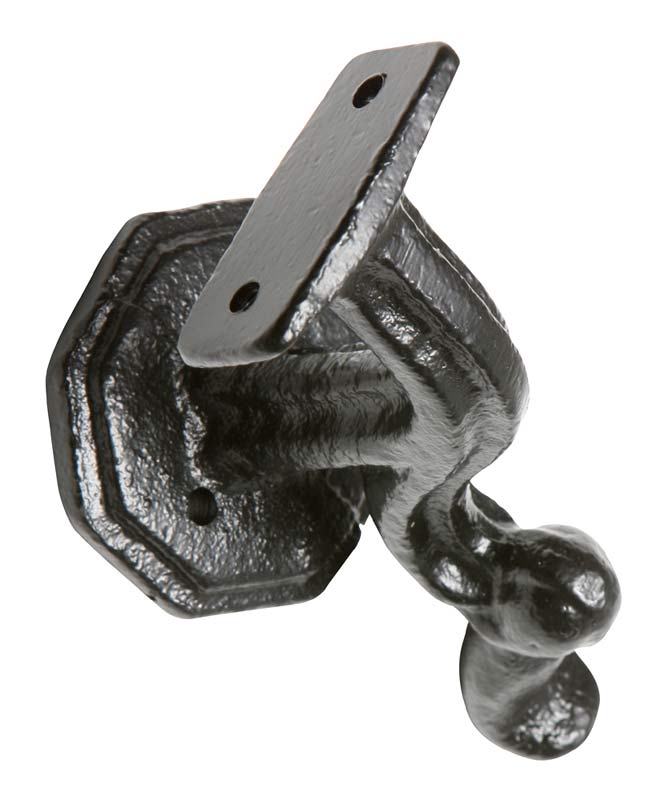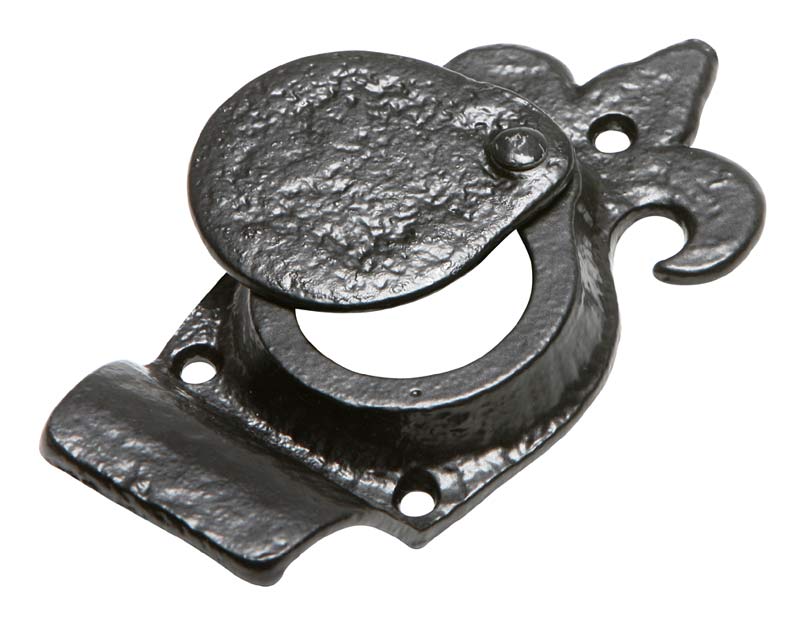Black Antique Door Furniture

![]()



Click here to view our range of Black Antique Style Door Furniture
In Black Antique, we see the origins of door furniture as it is today! First seen in 1380, this type of door furniture was produced by the local blacksmith out of cast iron. Cast iron is a brittle material and will not bend so early styles were plain and functional rather than aesthetic.
As wrought and malleable iron became available, more decorative styles came into production. This was due to the iron being easier to bend and shape and to produce patterns such as the leaf or spade shape which are designs still being used today. The plainer the style, the older it dates and very early examples would have been fixed using nails rather than screws!
During the 1870's and 1880's, the Gothic revival period saw the resurgence of black antique ironware. Even after the resurgence ended, this style of ironmongery was continually used in churches due to its strength and design appeal. It was and still is an ideal material for use on solid oak doors and any style of property requiring the "aged" or "dated" look.
Q. Antique black door furniture is made of iron; will it deteriorate over time?
A. Iron of any type including cast and malleable is at risk of corroding. When two areas of metal keep rubbing together an abrasive action is enacted, and due to this motion over time the protective painted surfaces are lost by this constant contact. Unfortunately this is unavoidable, buying high quality and taking good care of your product will help to protect it.
Q. How do I take care of my black door furniture?
A. Traditional malleable iron door furniture is protected with a black powder coating which is virtually maintenance free. Periodically wipe interior fittings over with a dry soft cloth. For exterior fittings (excluding bell pushes) dampen the cloth with warm soapy water to remove any dirt and dry thoroughly.
About once a year exterior fittings will benefit from a light oiling of any moving parts and this will also help to prevent corrosion. If the decorative finish shows signs of chipping, the affected area may be spotted with enamel paint (e.g. Humbrol enamel or similar) after making sure the surface is dry and grease free.
Q. Are there different qualities of antique black door furniture?
A. Yes there are three main types of antique black iron door furniture manufactured today.
i) Grey Iron. Although this is relatively easy and cheap to cast it is extremely brittle, in thin sections especially, and cannot be riveted, hammered or assembled with any ease.
ii) SG Iron. Although more durable than grey iron, it is difficult to cast into thin sections. It also does not inherit the toughness of malleable iron that is vital in everyday use of our door and window furniture.
iii) Malleable Iron. This is an iron that after casting is subjected to a heat treatment process known as annealing. In this process castings are heated to around 1000ºC for up to 100 hours whilst in contact with haematite ore. The ore acts as an oxidising agent, which removes carbon from the casting. It is the presence of carbon in cast iron that causes its brittleness and removing some makes the casting much stronger (malleable). This iron differs as it is stronger and more durable and can be cast and assembled into a wider range of products than the other two irons mentioned above.
Q. Do Door Furniture Direct sell quality black Ironmomongery?
A. Of course we do! We sell traditional, quality antique black door furniture, handmade and manufactured in the UK by craftsmen. These products are based on original patterns and have a much more authentic look and feel than the cheaper black iron; the cheaper antique furniture is very often artificially distressed and made of grey iron or SG iron. The best manufacturers of this door furniture (such as the Kirkpatrick™ brand) put their products through some vigorous actions to prevent it from corroding. During the finishing process a rust proofing finish is normally applied before the paint, then the ironwork is dipped into a liquid paint, coated in black powder, and cured by being baked off in a stove. This process leads to a high quality protective finish, which should preserve your furniture for many years if taken care of correctly. Have a look on our online store to see our range.
We also offer an imported range of malleable black iron products (such as the Tudor Collection) for the budget minded.
Q. What is a bell pull and crank and how do I go about fitting one?
A. The bell crank is a type of decorative lever which is operated by a bell pull. When the bell pull is pulled down, the lever in the crank moves. There are two types of bell crank - one is electrical, where the lever operates an electrical bell push which subsequently rings an electrical bell. The other is a mechanical type where the mechanical lever in the bell crank is designed to pull a cord attached to a mechanical bell on a coil spring through a system of pulleys. The bell pull and bell crank are attached to each other by a small length of chain in both cases.
To install a mechanical system you will require a bell pull, mechanical bell crank, and a mechanical Butlers Bell with a hardware pack (pulleys, cord, brackets etc). The bell crank is mounted high on the door frame and connected to the Butlers Bell by means of the cord using pulleys as necessary. The spring coil on the Butlers bell causes the bell to ring when the bell pull is actuated. The mechanical system is an accurate representation of the period style without the need for any electrical connections or batteries. A mechanical system is better suited when the distance between the bell pull and bell is not too far so that the cord can run tensioned in the system of pulleys satisfactorily. Extra hardware packs can be purchased if necessary and each contain 9 Metres of cord together with a pearl plate, angle bracket, three pulleys, screws and plugs. To obtain a good ringing sound the cord needs to be wrapped around each pulley one complete turn and should be taught between the pulleys. The inner spring on the bell should be set with sufficient tension.
To install an electrical system you will require a bell pull, electrical bell crank and ideally an electrical brass bell to give an authentic sound. In addition, electrical bell wire and cable clips will be needed and also a transformer if you do not wish to use batteries. If you already have an electrical door bell system it is of course possible to wire your existing system into the electrical bell crank for a simple installation. Existing systems may not however give an authentic sound so you may wish to change you bell to a more suitable sound such as the Victoria bell shown in our store. The Victoria bell is simply powered by four size C batteries but it is possible to use an 8 volt AC transformer instead if desired. An electrical system is generally easier to fit than a mechanical one provided the wiring is already in place from an existing door bell system. An electrical system is more suited when the bell is a long distance from the bell pull. An electrical system will also permit two or more bells to be wired into the circuit in the case of very large premises.
DISCLAIMER Door Furniture Direct makes every effort to ensure that the information contained in our FAQs is correct and accurate. We can however accept no responsibility for any errors or omissions or their subsequent effects. Indeed if you find any please let us know, we appreciate any advice or comments to improve these pages.
